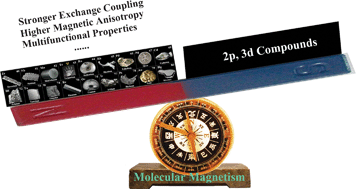Molecular magnetic materials based on 4d and 5d transition metals†
Abstract
The study of paramagnetic compounds based on 4d and 5d transition metals is an emerging research topic in the field of molecular magnetism. An essential driving force for the interest in this area is the fact that heavier metal ions introduce important attributes to the physical properties of paramagnetic compounds. Among the attractive characteristics of heavier elements vis-à-vis magnetism are the diffuse nature of their d orbitals, their strong magnetic anisotropy owing to enhanced spin–orbit coupling, and their diverse structural and redox properties. This critical review is intended to introduce readers to the topic and to report recent progress in this area. It is not fully comprehensive in scope although we strived to include all relevant topics and a large subset of references in the area. Herein we provide a survey of the history and current status of research that has been conducted on the topic of second and third row transition metal molecular magnetism. The article is organized according to the nature of the precursor building blocks with special topics being highlighted as illustrations of the special role of heavier transition metal ions in the field. This paper is addressed to readers who are interested in molecular magnetism and the application of coordination chemistry principles to materials synthesis (231 references).

- This article is part of the themed collection: Molecule-based magnets

 Please wait while we load your content...
Please wait while we load your content...